Chapter: Electrical machines : Three Phase Induction Motor
Rotor Output
Rotor Output
If Tg newton metre is the gross torque developed and N r.p.m is the speed of the rotor, then

If there were no copper losses in the rotor, the output would equal rotor input and the rotor would run at synchronous speed Ns.
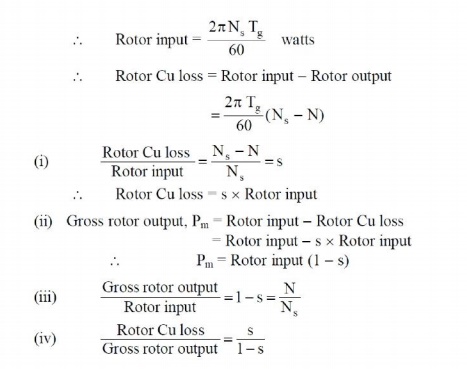
It is clear that if the input power to rotor is "Pr" then "s.Pr" is lost as rotor Cu loss and the remaining (1 - s) Pr is converted into mechanical power. Consequently, induction motor operating at high slip has poor efficiency.
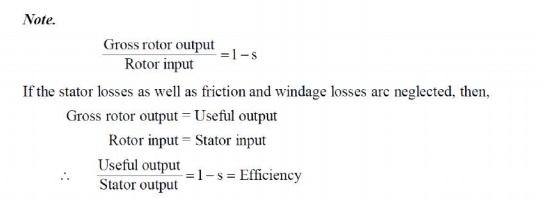
1. Torque Equations
The gross torque Tg developed by an induction motor is given by;
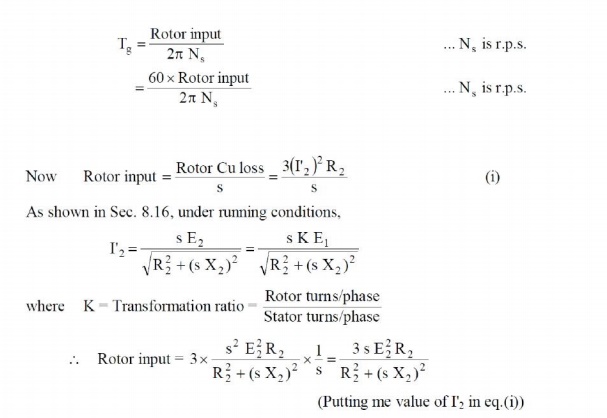
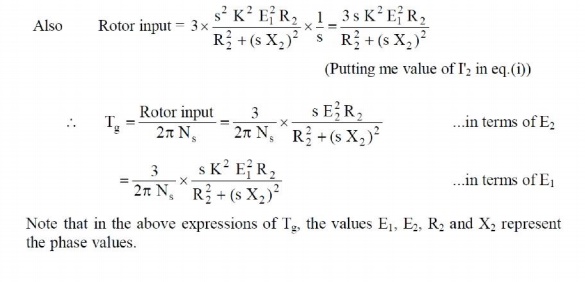
2. Rotor Torque
The torque T developed by the rotor is directly proportional to:
(i) rotor current
(ii) rotor e.m.f
(iii) power factor of the rotor circuit
T µ E2I2cosϕ2
Or T=KE2I2cosϕ2
Where
I2 = rotor current at standstill
E2 = rotor e.m.f at standstill
cosϕ2 = rotor p.f. at standstill
Note. The values o rotor e.m.., rotor current and rotor power factor are taken or the given conditions.
3. Starting Torque (Ts)
Let,
E2 = rotor e.m.f. per phase at standstill
X2 = rotor reactance per phase at standstill
R2 = rotor resistance per phase
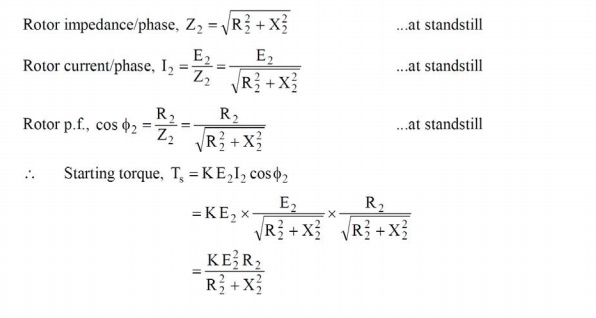
Generally, the stator supply voltage V is constant so that flux per pole set up by the stator is also fixed. This in turn means that e.m.f. E2 induced in the rotor will be constant.

Where K1 is another constant.
It is clear that magnitude of starting torque would depend upon the relative values of R2 and X2 i.e., rotor resistance/phase and standstill rotor reactance/phase.
It can shown that K = 3/2π Ns,

Note that here Ns is in r.p.s.
4. Condition for Maximum Starting Torque
It can be proved that starting torque will be maximum when rotor resistance/phase is equal to standstill rotor reactance/phase.

Hence starting torque will be maximum when:
Rotor resistance/phase = Standstill rotor reactance/phase
Under the condition of maximum starting torque, ϕ2 = 45° and rotor power factor is 0.707 lagging.

Fig. 3.14 shows the variation of starting torque with rotor resistance. As the rotor resistance is increased from a relatively low value, the starting torque increases until it becomes maximum when R2 = X2. If the rotor resistance is increased beyond this optimum value, the starting torque will decrease.
5. Effect of Change of Supply Voltage
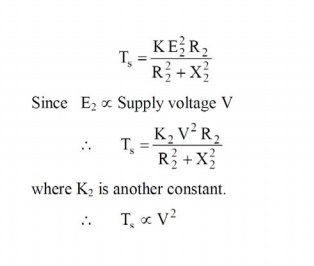
Therefore, the starting torque is very sensitive to changes in the value of supply voltage. For example, a drop of 10% in supply voltage will decrease the starting torque by about 20%. This could mean the motor failing to start if it cannot produce a torque greater than the load torque plus friction torque.
Related Topics